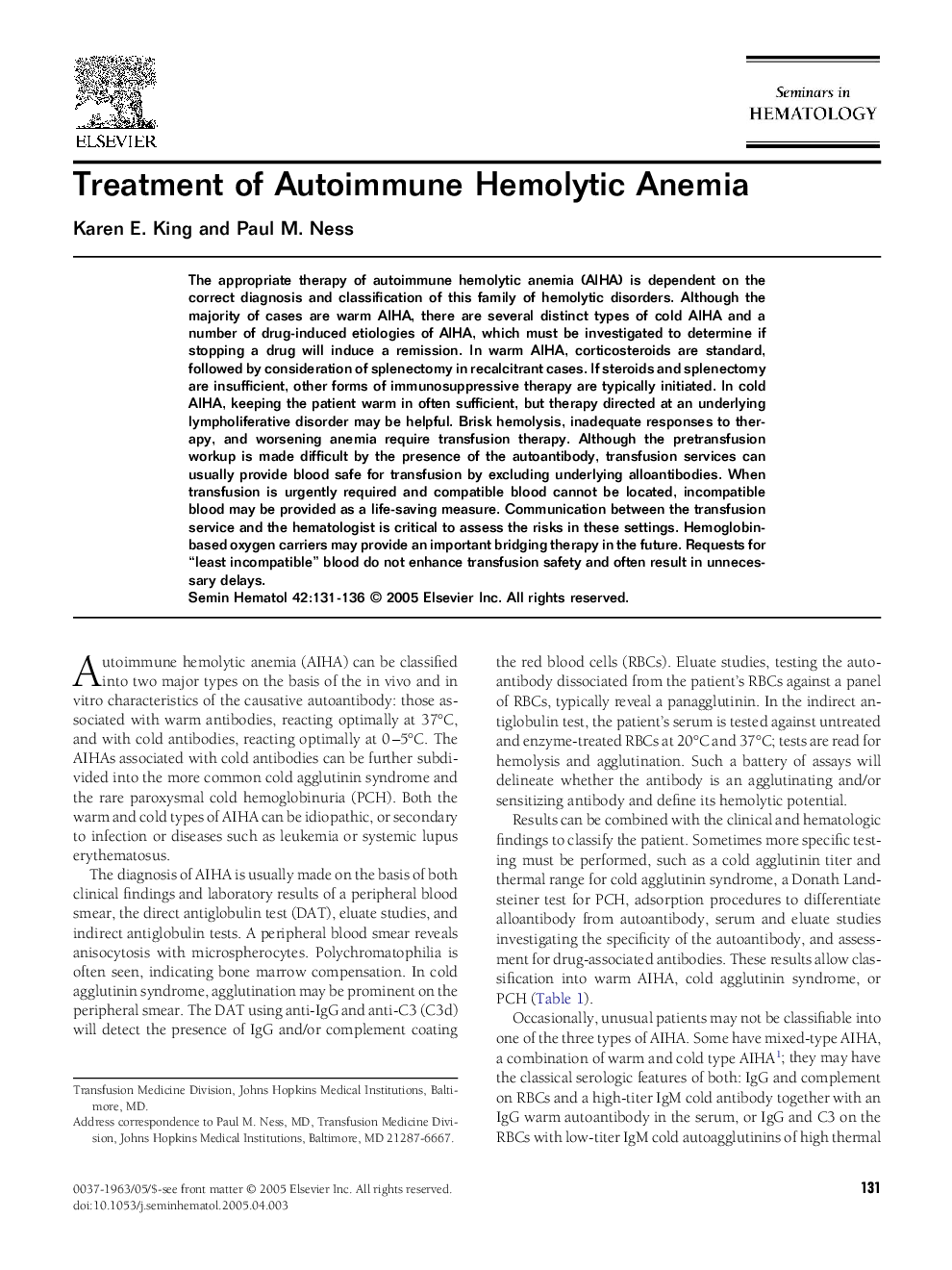| Article ID | Journal | Published Year | Pages | File Type |
|---|---|---|---|---|
| 9258377 | Seminars in Hematology | 2005 | 6 Pages |
Abstract
The appropriate therapy of autoimmune hemolytic anemia (AIHA) is dependent on the correct diagnosis and classification of this family of hemolytic disorders. Although the majority of cases are warm AIHA, there are several distinct types of cold AIHA and a number of drug-induced etiologies of AIHA, which must be investigated to determine if stopping a drug will induce a remission. In warm AIHA, corticosteroids are standard, followed by consideration of splenectomy in recalcitrant cases. If steroids and splenectomy are insufficient, other forms of immunosuppressive therapy are typically initiated. In cold AIHA, keeping the patient warm in often sufficient, but therapy directed at an underlying lympholiferative disorder may be helpful. Brisk hemolysis, inadequate responses to therapy, and worsening anemia require transfusion therapy. Although the pretransfusion workup is made difficult by the presence of the autoantibody, transfusion services can usually provide blood safe for transfusion by excluding underlying alloantibodies. When transfusion is urgently required and compatible blood cannot be located, incompatible blood may be provided as a life-saving measure. Communication between the transfusion service and the hematologist is critical to assess the risks in these settings. Hemoglobin-based oxygen carriers may provide an important bridging therapy in the future. Requests for “least incompatible” blood do not enhance transfusion safety and often result in unnecessary delays.
Related Topics
Health Sciences
Medicine and Dentistry
Hematology
Authors
Karen E. King, Paul M. Ness,
